
One of the largest hurdles in documentation is getting started — facing a blank page can be intimidating and cause the author to feel overwhelmed. By having a solid structure in place, you are creating a framework for documentation authors, helping them know what information to include and how to present it. Ultimately, structured documentation reduces confusion and ensures that all necessary details are captured.
Asset Layouts 101
Most documentation software has categories that serve as the main structure for your information and are key for organizing client/company information. They serve as containers to group similar types of assets (such as contacts, network devices, servers, applications, etc.) into a single place. Each category is typically further organized with fields, which are tailored to the specific data you need to record for each asset type.
Within Hudu, these categories are what we call "Asset Layouts". Asset layouts are standardized across all companies in your environment, meaning you only need to customize them once to use them for every client. This standardization helps technicians become familiar with a single structure, speeding up the process of finding and recording information, as well as ensuring that your documentation remains accurate and reliable for every client.
Relating this to the classic spreadsheet example, asset layouts can be considered different workbook sheets. Typically, the fields within the workbook would serve as column headers, and the assets would be your rows. For instance, if you need to document client desktops, a ‘Desktop’ asset layout would serve to group all of the devices, while the fields would let you document specific details for each desktop (e.g., Operating System [list select field], Warranty Expiration [date field], Location in the building [embed field]).
Throughout this article, we’ll provide information you can choose to implement within your organization to assist with building your documentation structure. The strategies we’ve outlined below are collected directly from our customers and are examples of ways they’ve improved their documentation structure with Hudu.
Success Strategies
1. Just start writing. One of the hardest parts of maintaining comprehensive documentation of IT environments is simply starting, but it shouldn’t be. You must overcome the initial documentation challenges by just starting to write/jot down quick notes and information as you go.
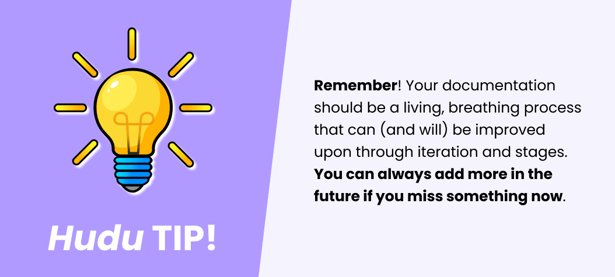

2. Start with a pen and paper. Before jumping into building your structure, jot down as many different assets as you can think of that you work with on a daily/weekly basis (client employees, desktops, servers, applications, etc.). Now, think about what information would be critical to you if the client were to call you in 2 months with a service request.
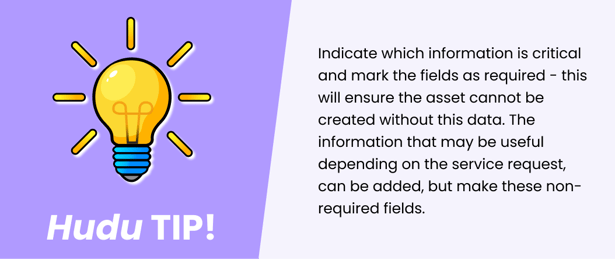
3. Begin by documenting the most critical areas. Think of your documentation as a living, breathing repository of information — used to assist technicians the next (future) times that you need to perform service on a particular asset. This will allow you to critically think about what information is REQUIRED for you to perform the job seamlessly, and which may be optional.
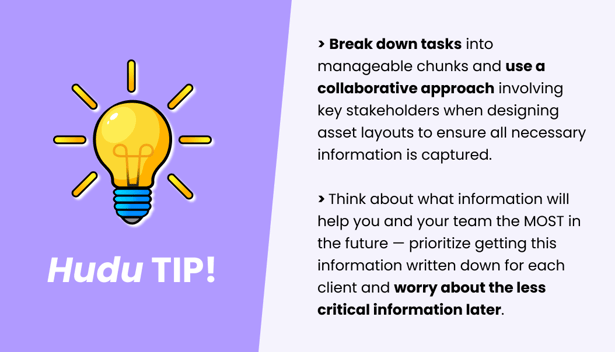
4. Maintain a similar (standardized) format across all of your software products. This can help ensure consistency and maintain uniformity in documentation and allows technicians ease of finding and using the information, regardless of which client they’re currently working with.
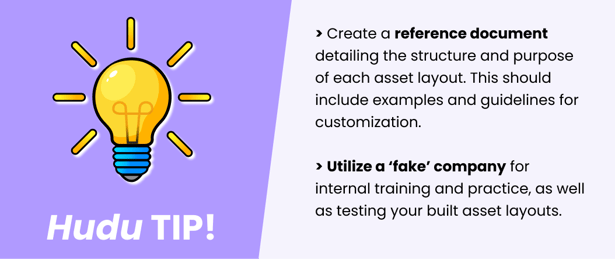

5. Adapt asset layout templates to your needs to save time. Pre-built asset layout templates will help you get started, but you'll want to customize and add additional asset layouts to what works for you.
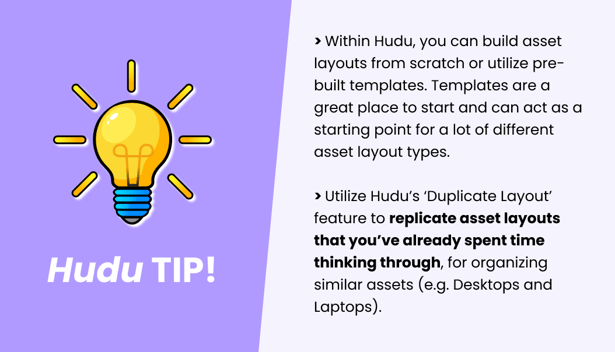

6. Utilize the software to your advantage. Use appropriate field types. Unlike spreadsheets, dedicated documentation software provides different field types which allows you to capture and display relevant information in a more useful format for technicians.
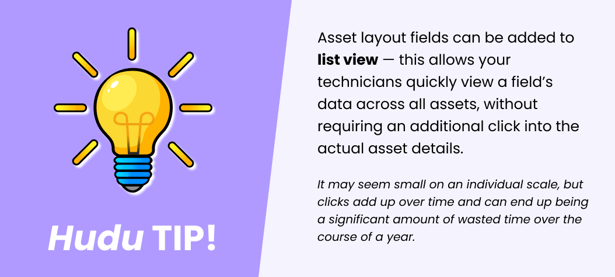
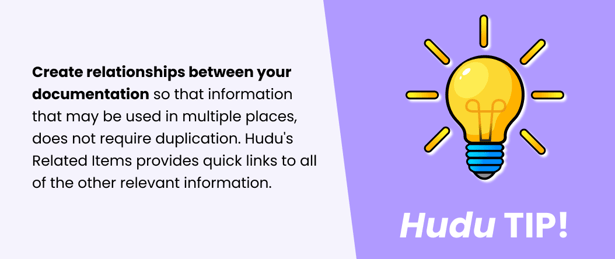
7. Provide technicians with examples of high-quality documentation to follow. This will allow them to know what you’re looking for when documenting information on specific asset types.
8. Regularly review and update fields. Your documentation will not remain static and will require you to adapt to changing needs and ensure it remains relevant and useful.

Wrapping It Up
The ultimate goal of documentation is to be read and understood by the user. Therefore, ‘good’ documentation improves readability and makes it easier for users to find and understand the information they need. This is especially important in IT, where clear and precise information can prevent costly mistakes.
Having a well-structured documentation system is vital for any efficient IT operation as it promotes consistency across documents. Without it, documentation can quickly become a source of frustration instead of a helpful resource — finding information becomes time-consuming and a defeating task for the end-user (e.g. technicians). This not only hampers productivity but can also lead to critical errors, oversights, and reduced customer satisfaction.
Related Posts
View All PostsSubscribe to Our Blog
Stay up-to-date on all Hudu happenings including releases and articles.


